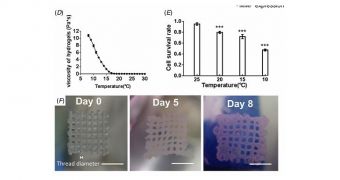When scientists and engineers introduced the idea of using 3D printing technology for medical applications, I didn’t think they’d actually use it to make diseases and pathogens, but here we are.
If I were to look at things objectively, I could say that the new but rapidly rising 3D printing segment of the technology industry is one of the most dramatic. Or maybe I should say that it’s one of the segments that spark the most drama at the present time.
After all, many a man, woman and child has cheered or wept over things like 3D printed hip implants, prosthetics and replacement skulls (yes, a replacement skull was actually used in a surgery, successfully).
Now, though, doctors are playing with things that could easily be misused. It’s bad enough that there are extremists, terrorists and just plain whackos out there that want to get their hands on pathogens they can spread around and cause havoc.
But now it seems that you can 3D print diseases. Artificial cells were one thing, but cancer is a pretty big leap further, or should I say sideways?
That’s right, recently I found out that cancerous cells were successfully created via 3D bioprinting.
The breakthrough
Scientifically, this is an important achievement, because it promises to help doctors study what makes tumorous cells behave the way they do. And how to stop it.
Curing cancer has been a long-term but important goal of the medical and scientific research community for decades now. Especially now that some might say the dilemma of the HIV virus is closer to being defeated than cancerous afflictions.
The cells weren’t perfect, but for a first batch, they certainly were very promising. And since harvesting and experimenting on pathogens in a lab has been done ever since chemistry became a science, one might argue that there’s nothing to worry about.
After all, it doesn’t matter where the samples came from, right? These kinds of experiments have been done for over a century now after all.
The risks
Being able to 3D print pretty much everything can be really dangerous. So far, risks have stayed low, because consumer 3D printers only work with plastic or resin and don’t have the sort of resolution and precision needed to make weird stuff like soluble or airborne toxins and illnesses.
But it won’t be long before even those 3D printers advance enough to be able to work microscopically. It’s all for the sake of the finished object’s detail after all.
And no offense to whomever is making the 3D printers, but they’re pretty easy to hack and modify from what I’ve seen.
It might sound like I’m only busting hot air here, and it might be true, but history has shown us that every time some new field of study shows up, things seem to be more prone towards disaster than usual.
Right now, it’s a non-issue because only experts and science labs work with printers that utilize other things besides plastic.
Soon, though, someone will make a miraculous all-purpose filament or resin, or maybe figure out how to condense different substances in tanks, and how to make a 3D printer combine them. Food 3D printers are an obvious target. Sellable ingredient capsules, anyone? Sure, let me just slip this anthrax in first and you can be on your way.
And with Heartbleed on the rampage, no secrets are safe. Especially since every new 3D printing discovery in the realm of science is being published and spread around the net as soon as possible.
But I’m sliding into science fiction now. A more down to earth point would be this: do we really need to 3D print cancerous cells or other bacteria and viruses? Because they’re not really what we’re trying to heal. Going back to the cancer cells that were 3D printed, they didn’t come out right, which means that the experiment only succeeded in creating a new strain of cancer, nothing more.
The needed balance
Last I heard, we were trying to cut down on diseases, not increase their variety. Here you might argue that “wait, it’s just a matter of time before we make perfect copies of the real deal,” but really, is there any point?
We may as well just go with what we’ve been doing, namely taking samples and going from there. Less risk of developing a treatment for something totally different that way (which could make the resulting “cure” useless or even harmful).
The only reason to actually go forward with 3D printing on a cellular and microscopic scale would be expediency, and increasing the supply of samples, but we’ve been doing fine so far. Better if we just focus on organ grafting and regeneration than trying to duplicate lethal conditions.
I suppose my point is that the scientific community should take things a bit more slowly and try to think twice about using 3D printing for this kind of research right now. It’s too early, and too much can go wrong, especially since there don’t seem to be any regulations in place for the use of the technology. Sure, 3D printed guns got that sort of specific response, but they’re a very small part of this segment.

 14 DAY TRIAL //
14 DAY TRIAL //